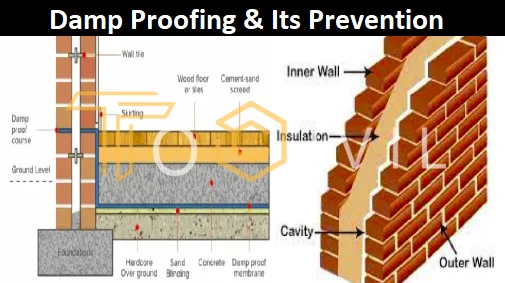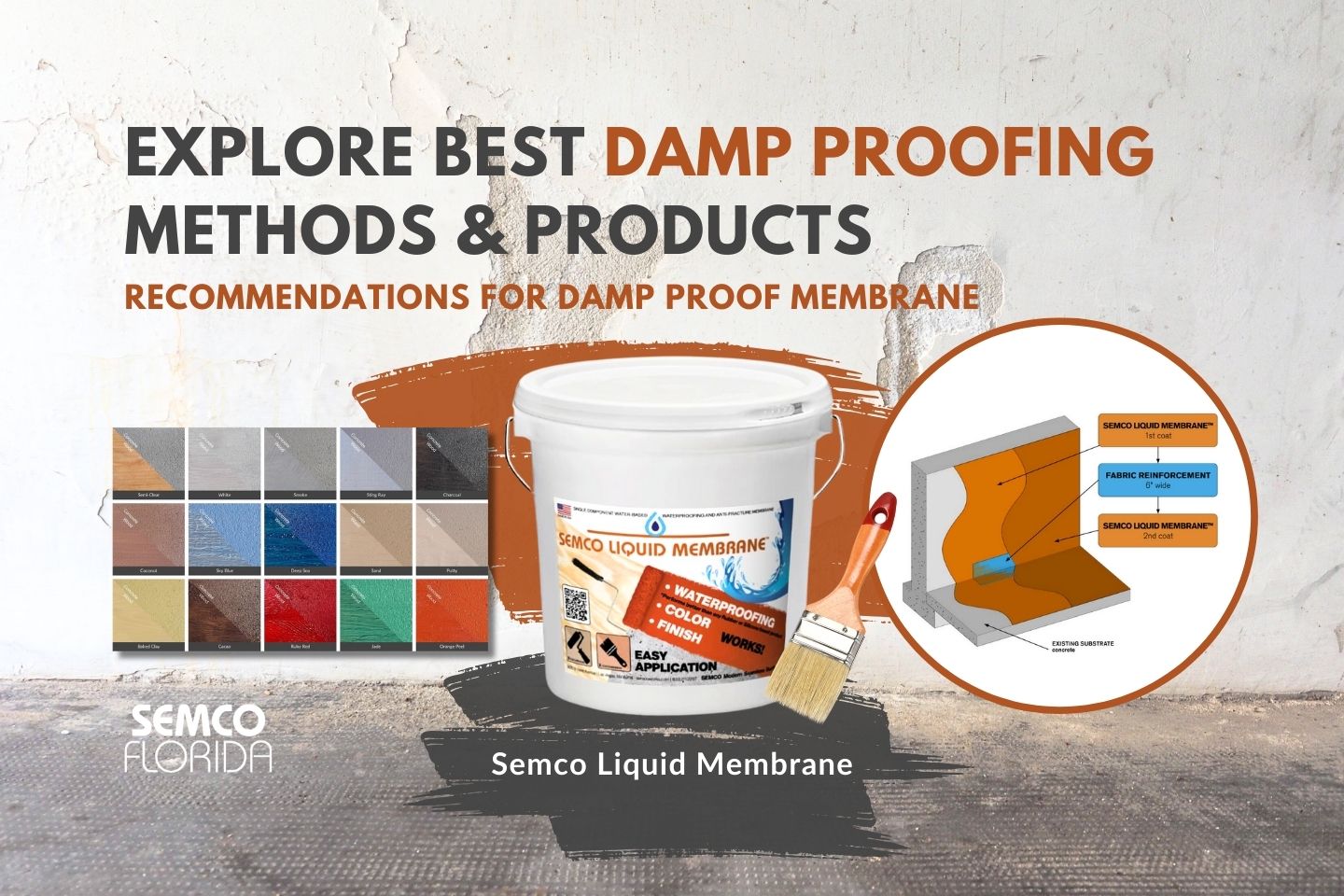Pro tips on dealing with rising damp from damp proofing newcastle
Pro tips on dealing with rising damp from damp proofing newcastle
Blog Article
Exploring the Various Methods and Solutions for Effective Damp Proofing
Dampness in structures presents significant obstacles to both architectural stability and interior air quality. Numerous strategies and remedies have arised to combat this prevalent concern. From traditional damp-proof membranes to ingenious chemical therapies, each method provides unique advantages. Recognizing these options is important for reliable wetness control. Picking the right solution depends on specific structure conditions and demands, triggering further expedition right into the most effective wet proofing techniques offered.
Understanding the Root Causes Of Wetness
Moisture can occur from numerous sources, recognizing these reasons is essential for efficient remediation. Frequently, dampness stems from 3 main sources: increasing wet, penetrating damp, and condensation. Climbing wet takes place when groundwater takes a trip up with porous materials, such as block or stone, typically as a result of an absence of an effective barrier (mould removal newcastle). Penetrating damp is generally brought on by outside factors, including roof leakages, damaged rain gutters, or harmed wall surfaces, enabling water to penetrate a building. Condensation, on the various other hand, arises from excess wetness airborne, frequently worsened by bad ventilation and temperature differences, resulting in water droplets forming on surface areas. Recognizing these underlying issues is essential, as each sort of dampness calls for a tailored method for remediation. Appropriate assessment aids in determining one of the most reliable remedies, ultimately guarding the architectural stability of a building and enhancing indoor air high quality
Standard Damp-Proof Membrane Layers

Chemical Damp-Proofing Solutions
Chemical damp-proofing solutions provide an innovative method to avoid moisture breach in structures. These techniques normally include the application of liquid chemicals that pass through masonry and develop a barrier versus rising damp. Typically utilized chemicals include silanes, siloxanes, and other water-repellent agents that react with surface area materials to develop a hydrophobic layer.The application procedure normally calls for boring holes into the wall surfaces, infusing the chemical option, and allowing it to cure. This technique is particularly advantageous for older frameworks where standard damp-proof membranes might be impractical. Chemical damp-proofing can be less turbulent and much more cost-effective than comprehensive renovation projects.While reliable, these services depend on correct application and ecological conditions for peak efficiency. mould removal newcastle. Regular upkeep and surveillance are vital to ensure the long life of the damp-proofing treatment. On the whole, chemical damp-proofing stands for a versatile choice for safeguarding structures against moisture-related damage
Dental Caries Wall Building Strategies
Cavity wall construction methods supply numerous benefits, specifically in moisture control and power efficiency. By integrating an air void between two layers of stonework, these wall surfaces successfully minimize water ingress while improving insulation. This mix not just safeguards frameworks from wetness yet also contributes to minimized power intake.
Benefits of Cavity Walls
When taking into consideration effective damp proofing techniques, the benefits of dental caries wall surfaces stand out prominently. Tooth cavity wall surfaces consist of two separate layers, producing an air void that effectively decreases wetness infiltration. This style decreases the risk of wetness, as the external wall serves as an obstacle against rain and water ingress. Furthermore, tooth cavity walls improve thermal insulation, which contributes to energy effectiveness by minimizing warmth loss. They additionally offer sound insulation, helping to develop a quieter interior setting. The air space allows for ventilation, which assists in wetness control and reduces the chance of mold and mildew growth. These benefits not only boost the general comfort of a building yet likewise add to its longevity and architectural stability.
Moisture Control Strategies
Effective dampness control techniques are essential in dental caries wall building and construction to ensure lasting security versus moisture. One key technique entails the consolidation of weep openings, which promote water drain from the cavity, avoiding buildup. Additionally, making use of breathable membrane layers can assist take care of moisture levels while permitting trapped vapor to leave. Appropriate placement of insulation is additionally important, as it ought to not block drainage paths. In addition, guaranteeing that the external fallen leaves of the cavity wall are created with waterproof materials enhances general durability. Routine maintenance checks are necessary to recognize any kind of clogs or damages early, guarding the framework's honesty. Eventually, a mix of these strategies creates a durable protection versus dampness invasion in tooth cavity wall surfaces.
Insulation and Energy Efficiency
Insulation plays an important role in enhancing energy performance within dental caries wall surface building and construction. By including shielding products, these walls create a thermal barrier that minimizes heat loss and reduces energy consumption. Reliable insulation not just aids keep a secure interior temperature yet additionally alleviates the risk of wetness, as it protects against condensation within the wall surface cavity. Different methods, such as using rigid foam boards or mineral wool, can be utilized to achieve suitable insulation efficiency. In addition, appropriate setup is necessary to ensure that voids and gaps are decreased, which can otherwise endanger power performance. Eventually, a well-insulated cavity wall contributes substantially to general sustainability and lowers home heating and cooling prices for property owners.
Exterior Damp Proofing Techniques
Exterior moist proofing approaches are important for shielding frameworks from moisture seepage. Two reliable techniques consist of the application of water-proof membranes and the setup of French drains. These solutions assist minimize water build-up and maintain the integrity of structures.
Waterproof Membrane Layer Application
While numerous techniques exist for preventing wetness access, the application of waterproof membranes stays a very efficient exterior damp proofing method. These membrane layers are normally made from materials such as polyethylene, rubber, or customized asphalt, supplying a durable barrier versus water penetration. The setup procedure involves using the membrane layer to the outside surfaces of structures or walls, making certain full coverage to stop leakages. Correct attachment and sealing at joints are essential to optimizing effectiveness. Water-proof membranes can be applied in different types, consisting of fluid coverings and sheet membranes, enabling adaptability based upon the specific requirements of the framework. This approach not just protects buildings from dampness however likewise improves their durability and architectural honesty.
French Drainpipe Installment
One reliable approach for taking care of groundwater and preventing dampness buildup around a structure's foundation is the installation of a French drain. This drain system includes a trench filled with crushed rock and a perforated pipeline that reroutes surface water away from the structure. Correct setup needs careful preparation, making certain that the drain inclines far from the framework to facilitate ideal water flow. In addition, the area of the drain is vital; it should be placed in areas susceptible to merging or excess moisture. Routine maintenance, including clearing particles from the crushed rock and making sure the pipeline continues to be unhampered, is necessary for long-term effectiveness. Ultimately, a well-installed French drainpipe can substantially decrease the risk of water-related concerns in foundations and cellars.
Interior Waterproofing Approaches
Interior waterproofing approaches are vital for securing a building's inside from moisture seepage and potential water damages. These approaches normally involve the application of specific products and techniques created to create a wetness obstacle within the structure. One usual method is using water resistant coatings or sealers on walls and floors, which protect against moisture from passing through surfaces.Additionally, installing indoor drainage systems, such as sump pumps, can successfully take care of water build-up in cellars and crawl areas. One more method includes making use check here of vapor barriers, which are set up to hinder dampness activity from the ground into living spaces.Moreover, attending to any kind of cracks or voids in walls or foundations with suitable sealers ensures a comprehensive defense against water invasion. By applying these interior waterproofing techniques, home proprietors can considerably lower the threat of mold growth, architectural damages, and other moisture-related concerns. Correct implementation of these techniques is vital for lasting defense and structure honesty.
Regular Maintenance and Evaluation Practices
Routine upkeep and assessment methods are important for guaranteeing the long-term effectiveness of wet proofing remedies in any kind of structure. Routine checks enable building proprietors to determine early indicators of wetness invasion, such as peeling paint, mold and mildew growth, and moldy smells. These indicators can signify underlying concerns that need immediate attention.Inspections should be conducted at the very least each year, concentrating on prone areas like basements, crawl rooms, and outside wall surfaces. During these assessments, residential or commercial property owners should take a look at sealants, water drainage systems, and ventilation to verify they function correctly.Additionally, preserving seamless gutters and downspouts is necessary, as clogged up systems can result in water buildup near the foundation. Applying a routine upkeep schedule, along with timely fixings, can substantially expand the life expectancy of damp proofing procedures and protect the structural honesty of the building. Positive actions eventually add to the general wellness and safety of the living setting.
Frequently Asked Concerns
The Length Of Time Does Damp Proofing Usually Last?
The period of moist proofing performance differs, usually lasting between 20 to 50 years. Factors such as application high quality, environmental conditions, and upkeep practices greatly influence the durability of the wet proofing treatment.

Can I Damp Proof My Home Myself?
The specific considered the usefulness of DIY damp proofing. With proper study and the best products, it is possible. They also acknowledged the importance of expert advice to guarantee resilient effectiveness and avoid future concerns.
What Are the Signs of Inefficient Damp Proofing?
Indicators of ineffective moist proofing consist of persistent moldy smells, noticeable mold growth, peeling off paint, wet patches on walls, and timber degeneration - damp specialist newcastle. Property owners should deal with these problems promptly to avoid additional damages and wellness concerns
Does Damp Proofing Affect Indoor Air High Quality?

Exactly How Much Does Specialist Damp Proofing Cost?
Expert wet proofing costs differ significantly, typically ranging from $1,000 to $5,000 relying on the residential property's dimension, the extent of the moist problem, and picked methods. Each circumstance needs a customized assessment for accurate prices. Commonly, dampness originates from 3 primary resources: increasing wet, permeating damp, and condensation. When taking into consideration efficient wet proofing techniques, the benefits of tooth cavity walls stand out prominently. External damp proofing techniques are necessary for shielding frameworks from dampness seepage. While various methods exist for avoiding wetness ingress, the application of water resistant membranes stays an extremely efficient outside wet proofing strategy. Indicators of inadequate damp proofing consist of consistent moldy odors, noticeable mold and mildew growth, peeling paint, wet patches on wall surfaces, and timber decay.
Report this page